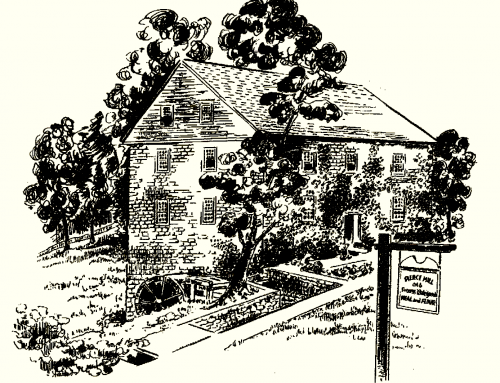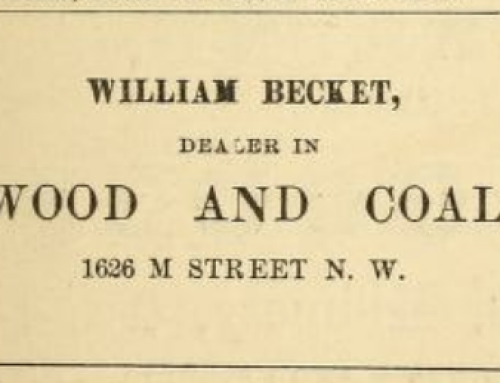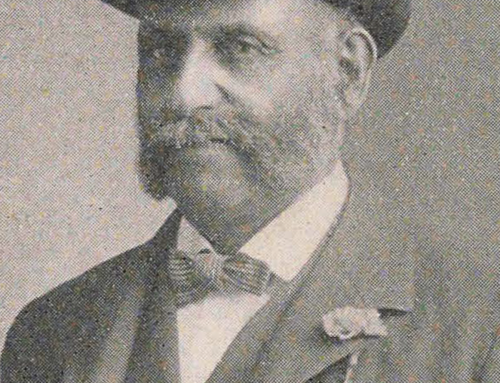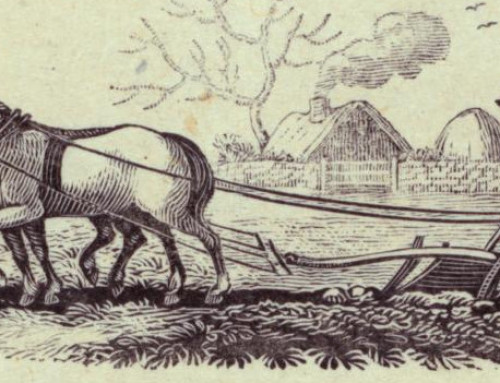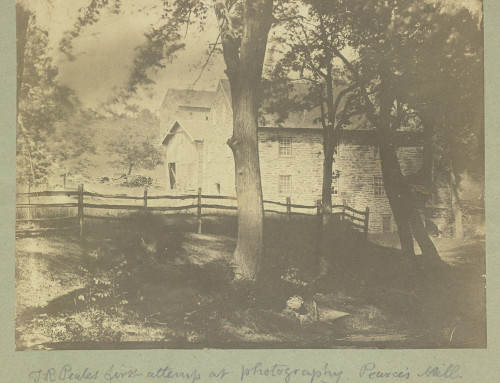A Fruit Tree Grows in Washington:
A History of Orchards Near Rock Creek
In an orchard on a hillside behind Peirce Barn, Tim Makepeace works with volunteers and Rock Creek Park staff to care for two dozen apple and pear trees planted in 2012. These eleven-year-old trees represent more than 200 years of Washington history. In the 19th century, the Peirce family grew and sold fruit trees on their land near Rock Creek. As early as 1814, Isaac Peirce was advertising his nursery business in local newspapers, boasting of 20,000 fruit trees for sale.
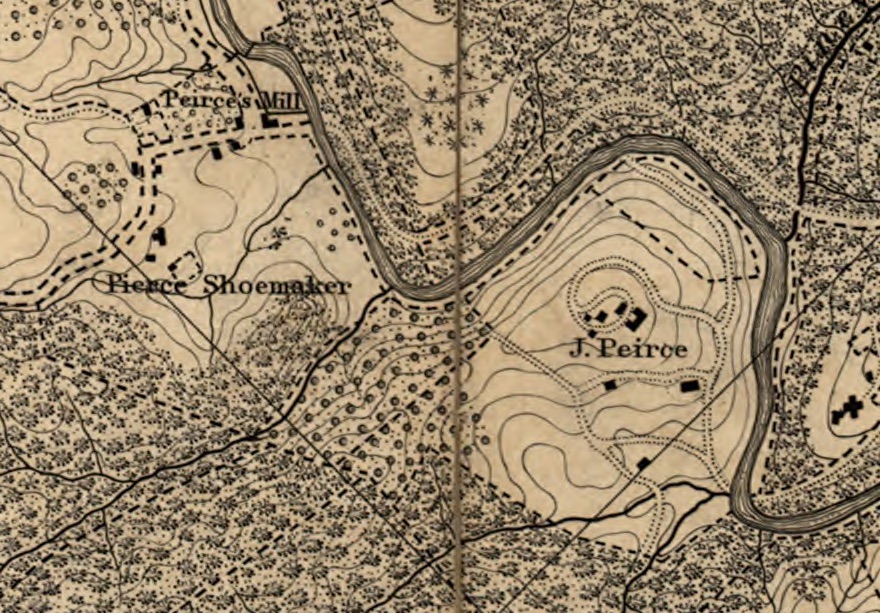
Detail from the 1861 Boschke map of Washington showing the location of Peirce Mill, on the upper left, and Joshua Peirce’s Linnaean Hill, on the right.
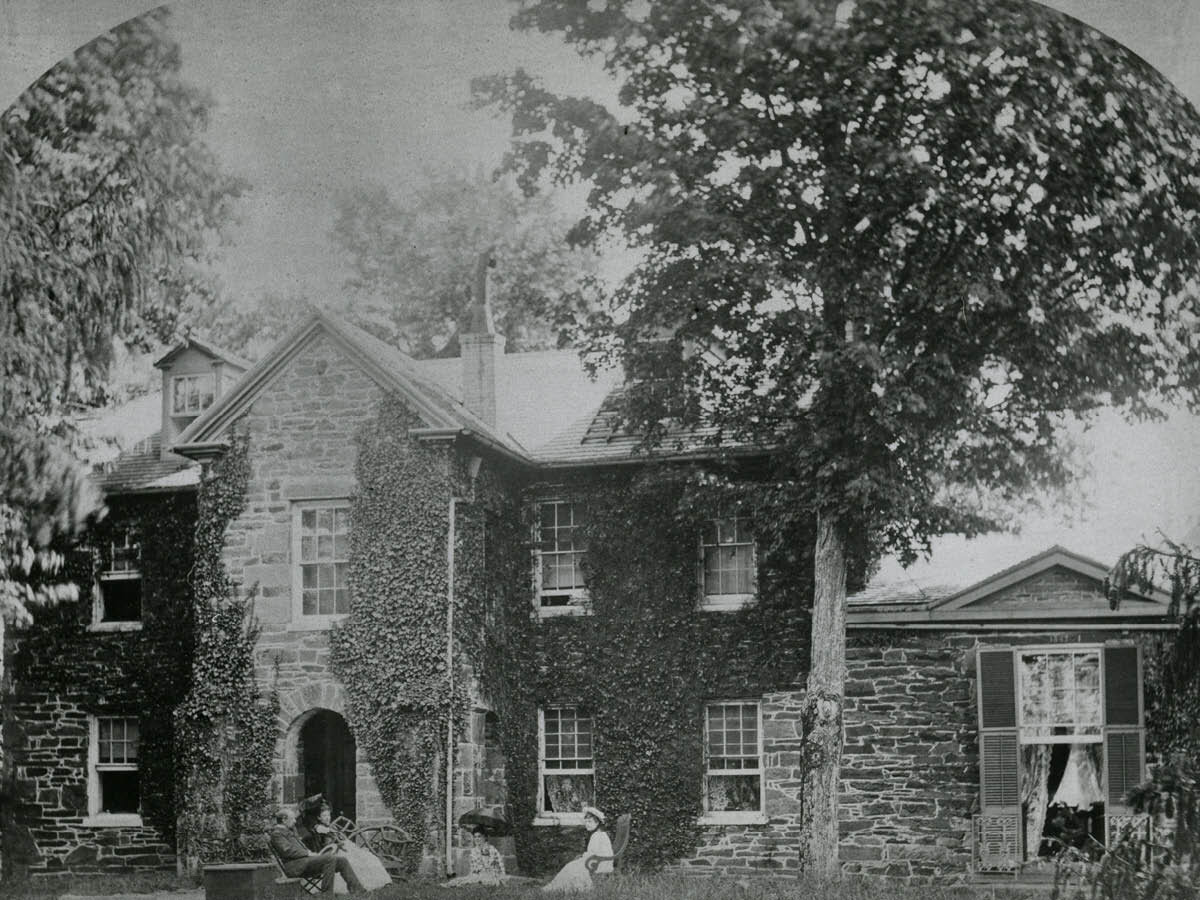
Photographed in 1875, Joshua Peirce’s Linnaean Hill is now known as Klingle Mansion. Today, the stone building serves as Rock Creek Park headquarters.
Isaac Peirce was a millwright by trade, and by 1829 he had built a new gristmill beside Rock Creek. But Isaac’s son Joshua was more interested in plants. On land he inherited just south of the mill, Joshua Peirce expanded the family’s horticultural business and established one of Washington’s first commercial nurseries. The younger Peirce named his estate Linnaean Hill, after the Swedish botanist Carl Linnaeus.
But in running his successful business, Joshua Peirce–like his father–profited from the labor of enslaved men, women, and children. When President Lincoln signed the DC Emancipation Act in April 1862, ten individuals were listed as enslaved on Linnaean Hill, including William Beckett, who managed the nursery business–and who was also Joshua Peirce’s son. After Emancipation, Beckett went on to a distinguished career as a DC business owner, presidential coachman, doorkeeper at the Library of Congress, and well-known community member.
But just after the Civil War, Beckett returned to Linnaean Hill to run Peirce’s sprawling nursery. Peirce told an associate that it was “impossible to carry on his business” without Beckett–and it was a complex operation to manage. Joshua Peirce advertised an astonishing variety of fruit trees available for purchase from his orchard: an 1824 catalogue lists more than one hundred kinds of apples. And they sold much more than fruit trees on Linnaean Hill. The catalogue includes an abundant variety of other deciduous trees, “ornamental” evergreens, flowering shrubs, “vines and creepers” and “herbaceous, medicinal, and culinary plants.” Joshua Peirce’s descendants would later boast–perhaps not inaccurately–that their ancestor’s nursery had filled the gardens of Washington with plants.
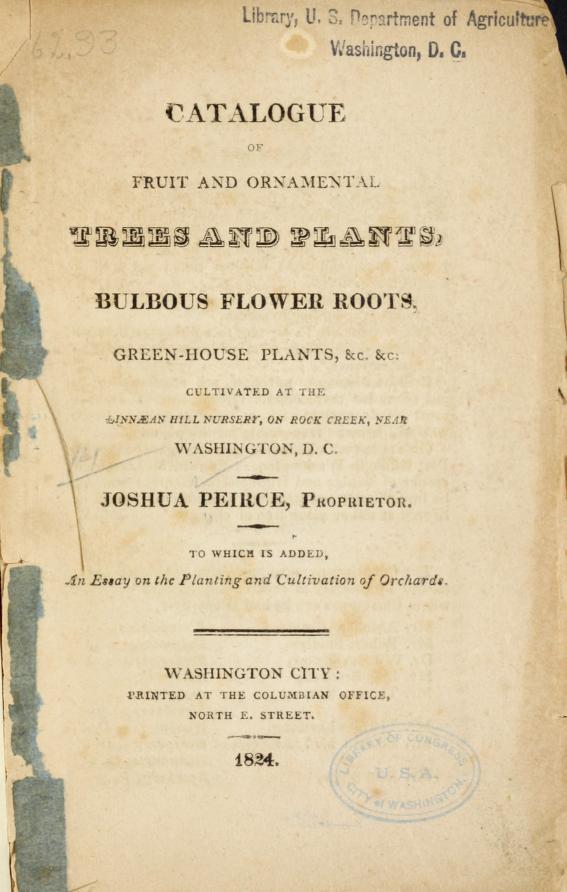
Joshua Peirce’s 1824 catalogue of trees and plants. From a hilltop in Washington, he sold through agents as far away as Philadelphia.
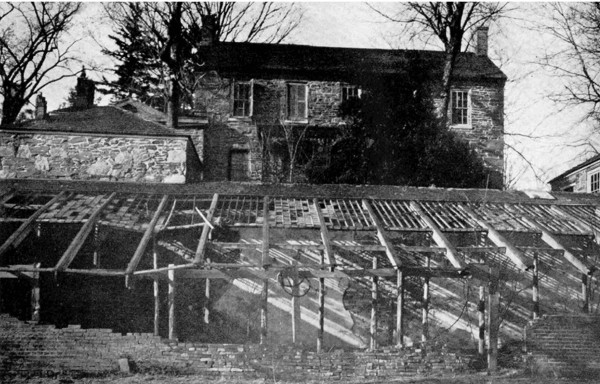
By 1906, only the skeletons of greenhouses were left on Linnaean Hill.
When Joshua Peirce died in 1869, he left Linnaean Hill to his nephew, Joshua Peirce Klingle. The Peirce family sold their land to become part of Rock Creek Park in 1891, and by the turn of 20th century little was left of the nursery business–though the stone mansion still stands.
But a couple fruit trees still grow on Linnaean Hill, including this very old pear tree, which may be a remnant of Joshua Peirce’s 19th-century nursery business. Rock Creek Park botanist Anna Chuquin and volunteers surveyed the property for fruit trees in the spring of 2023, and are working to care for these very old specimens.
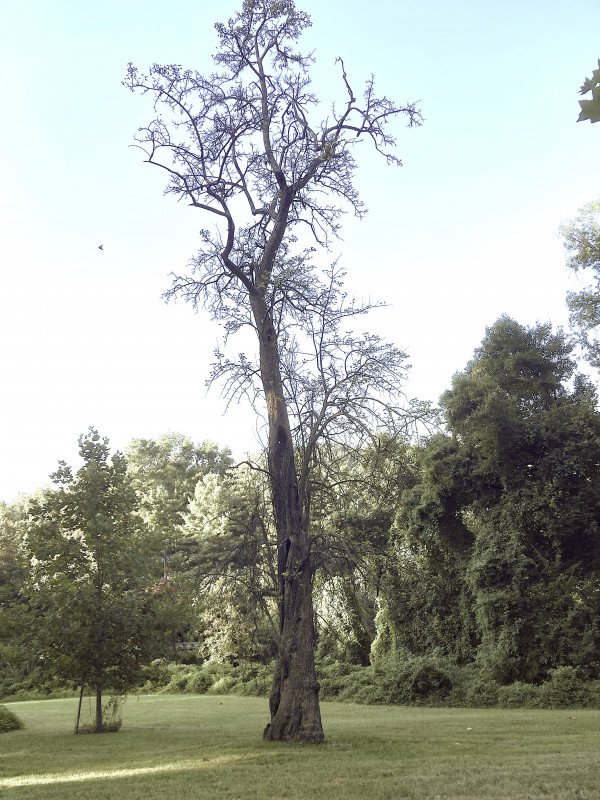
This very old pear tree still grows near Klingle Mansion, once known as Linnaean Hill.
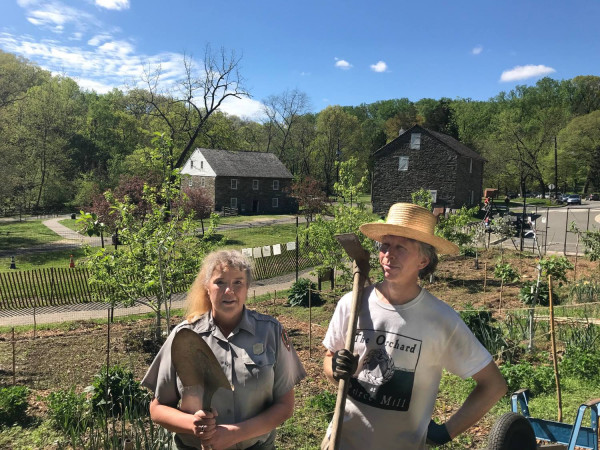
The Friends of Peirce Mill work with the National Park Service and volunteers to care for a demonstration orchard.
Just north of Linnaean Hill, the National Park Service and the Friends of Peirce Mill established a demonstration orchard in 2012. Today, orchardist Tim Makepeace and a dedicated group of volunteers care for the young fruit trees. Makepeace cultivates some of the varieties of apples and pears once listed in Joshua Peirce’s nursery catalogue.
The orchard at Peirce Mill features heirloom varieties like Harrison, a prized cider apple that was believed extinct until 1976, when a specimen was discovered living in New Jersey. Like all apples, these trees do not grow true from seed, and Harrison apples only grow from the grafted branches of another Harrison tree.
Click here for a full list of trees growing in the orchard at Peirce Mill.
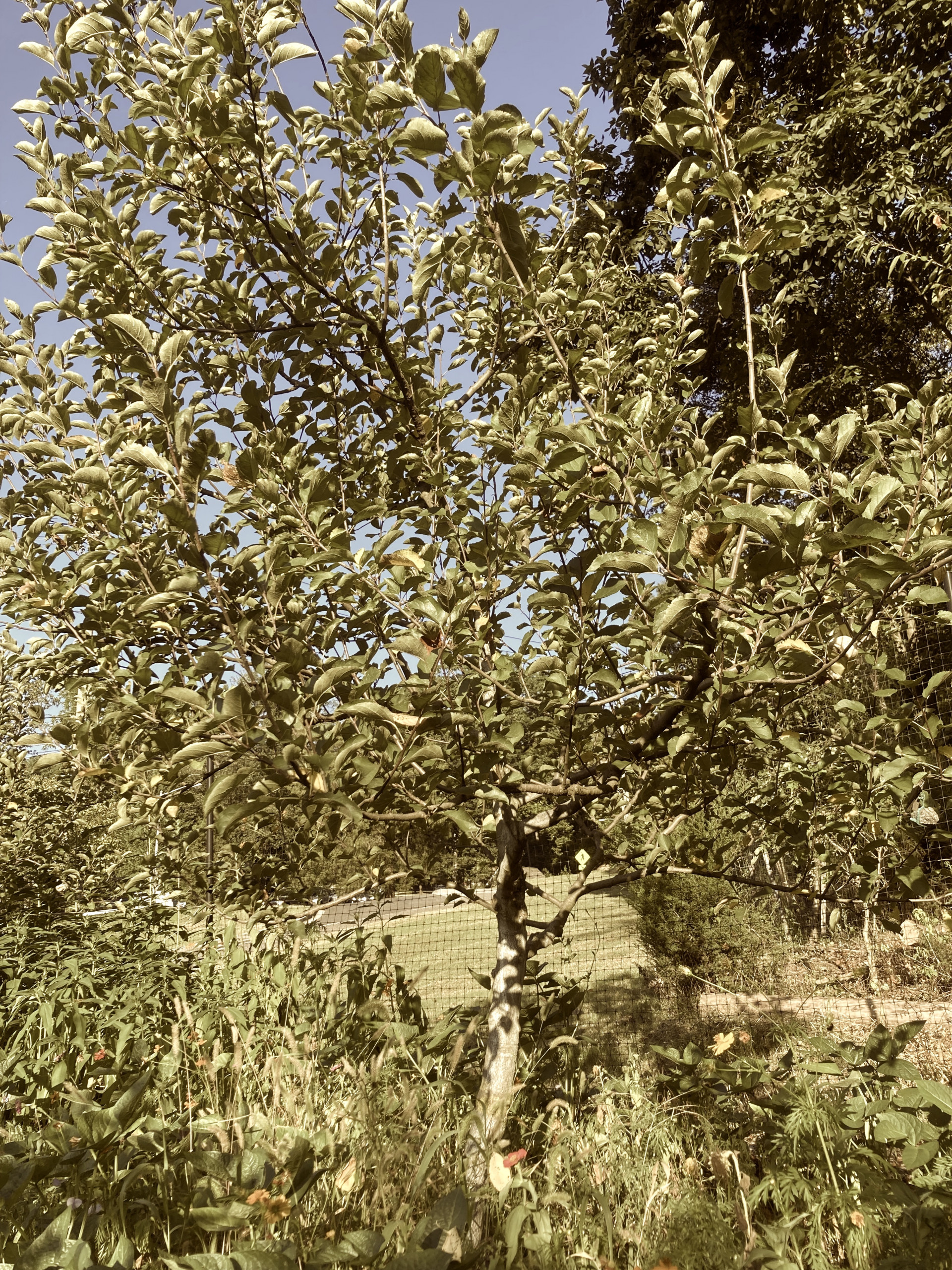
This young tree will produce Harrison apples, a popular cider variety once grown in orchards owned by the Peirce family.
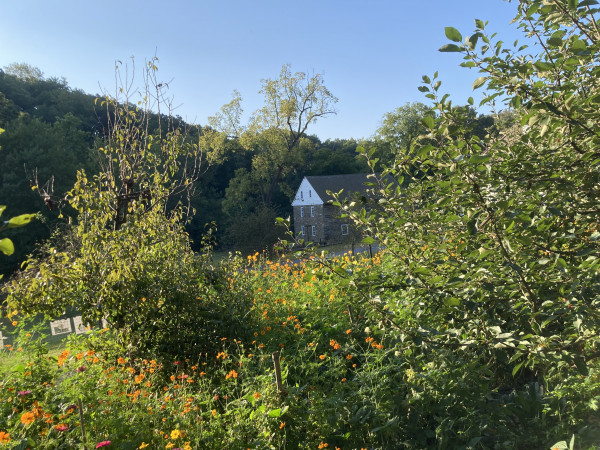
Flowering cover crops build the soil in the orchard, and create a spectacular display in the fall.
In his 1824 catalogue, Joshua Peirce reprinted an article “On the Planning and Cultivation of Orchards.” The essay recommends using cover crops to build healthy soil for fruit trees–a practice that is used in today’s orchard. Though these young trees do not yet yield much fruit, the orchard’s cover crops produce a stunning display of flowers each fall, and the soil gets richer each year.
If you’re near Peirce Mill, stop by the orchard! And if you’re feeling adventurous you can even hike from the mill up to Linnaean Hill on the Western Ridge Trail.
Interested in learning more about volunteering in the orchard?
Email Tim Makepeace, makepeace@verizon.net

